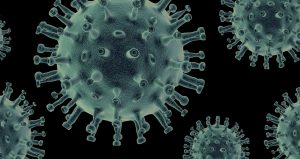COVID-19 vs. Common Cold: Key Difference
Have you ever woken up with a scratchy throat and a runny nose, only to be gripped by sudden panic? 😷 In today’s world, every sniffle and cough can trigger alarm bells. Is it just a common cold, or could it be COVID-19? This uncertainty has become an all-too-familiar feeling for many of us.
While both illnesses share similarities, understanding the key differences between COVID-19 and the common cold is crucial. Not only can it help alleviate unnecessary anxiety, but it can also guide you in taking the right steps to protect yourself and others. 🛡️ From symptoms to transmission, and from diagnosis to treatment, knowing what sets these two apart can make all the difference in your response and recovery.
In this blog post, we’ll dive into the five critical areas where COVID-19 and the common cold diverge: symptoms, transmission and contagiousness, diagnostic approaches, treatment strategies, and prevention measures. By the end, you’ll be better equipped to distinguish between these two illnesses and take appropriate action. Let’s unravel the mystery and arm ourselves with knowledge! 🧠💪
 Symptoms: Spotting the Differences
Symptoms: Spotting the Differences
A. Unique COVID-19 symptoms
COVID-19 presents several distinctive symptoms that set it apart from the common cold:
- Loss of taste or smell
- Shortness of breath or difficulty breathing
- Severe fatigue
- Chest pain or pressure
These symptoms are rarely associated with the common cold and should be taken seriously if experienced.
B. Common cold symptoms
The common cold typically manifests with milder symptoms:
- Runny or stuffy nose
- Sore throat
- Mild fatigue
- Occasional mild cough
C. Overlapping symptoms
Some symptoms can occur in both COVID-19 and the common cold, making initial differentiation challenging:
- Fever (though more common and often higher in COVID-19)
- Cough
- Fatigue
- Headache
D. Severity and duration comparisons
| Aspect | COVID-19 | Common Cold |
| Onset | Often sudden | Usually gradual |
| Duration | 7-14 days (can be longer) | 7-10 days |
| Severity | Can range from mild to severe | Generally mild |
| Complications | Potentially life-threatening | Rarely severe |
COVID-19 symptoms are more severe and long-lasting than the common cold. While cold symptoms typically peak within the first few days and gradually improve, COVID-19 symptoms can worsen over time and lead to serious complications, especially in high-risk individuals.
Now that we’ve examined the symptom differences, let’s explore how these illnesses spread and their levels of contagiousness.
 Transmission and Contagiousness
Transmission and Contagiousness
A. How COVID-19 spreads
COVID-19 primarily spreads through respiratory droplets and aerosols when an infected person coughs, sneezes, talks, or breathes. These particles can remain airborne for extended periods, especially in poorly ventilated spaces. Additionally, the virus can spread through contact with contaminated surfaces, although this is less common.
B. Common cold transmission methods
The common cold typically spreads through:
- Direct contact with infected individuals
- Touching contaminated surfaces
- Inhaling respiratory droplets
Unlike COVID-19, aerosol transmission is less significant for the common cold.
C. Infectiousness periods
| Illness | Incubation Period | Contagious Period |
| COVID-19 | 2-14 days | 2-3 days before symptoms to 10+ days after |
| Common Cold | 1-3 days | 1-2 days before symptoms to 7-14 days after |
COVID-19 has a longer potential infectiousness period, making it more challenging to control.
D. Risk factors for each illness
Both COVID-19 and the common cold have shared risk factors, but COVID-19 presents additional concerns:
- Common risk factors:
- Close contact with infected individuals
- Touching contaminated surfaces
- Poor hand hygiene
- Additional COVID-19 risk factors:
- Prolonged exposure in poorly ventilated areas
- Attending large gatherings
- Not wearing masks in public spaces
Understanding these transmission differences is crucial for effective prevention. Next, we’ll explore the diagnostic approaches used to distinguish between COVID-19 and the common cold.
 Diagnostic Approaches
Diagnostic Approaches
COVID-19 testing options
COVID-19 testing has evolved significantly since the pandemic’s onset. There are primarily two types of tests available:
- Molecular tests (PCR)
- Antigen tests (rapid tests)
| Test Type | Accuracy | Turnaround Time | Sample Collection |
| PCR | High | 1-3 days | Nasal swab |
| Antigen | Moderate | 15-30 minutes | Nasal swab |
PCR tests are considered the gold standard for COVID-19 diagnosis due to their high accuracy. Antigen tests, while less accurate, offer quicker results and are useful for screening purposes.
Diagnosing a common cold
Common colds are typically diagnosed based on symptoms alone. Unlike COVID-19, specific tests are rarely needed. Healthcare providers may:
- Examine the throat and nasal passages
- Check for swollen lymph nodes
- Listen to lung sounds
When to seek medical attention
Seek immediate medical care if you experience:
- Difficulty breathing
- Persistent chest pain
- Confusion or inability to stay awake
- Bluish lips or face
For both COVID-19 and common colds, consult a healthcare provider if symptoms worsen or persist beyond a week.
Self-assessment guidelines
To differentiate between COVID-19 and a common cold:
- Monitor your symptoms closely
- Check your temperature regularly
- Pay attention to any loss of taste or smell
- Consider your potential exposure to COVID-19
If you’re unsure, it’s always best to isolate and consult a healthcare professional. Remember, while these guidelines can help, they don’t replace professional medical advice.
 Treatment Strategies
Treatment Strategies
A. COVID-19 management techniques
COVID-19 management primarily focuses on symptom relief and preventing severe complications. For mild cases, rest, hydration, and over-the-counter pain relievers are recommended. In severe cases, hospitalization may be necessary for oxygen therapy or mechanical ventilation.
B. Common cold remedies
Common cold remedies typically involve:
- Rest and sleep
- Staying hydrated
- Gargling with saltwater
- Using a humidifier
- Consuming hot liquids (e.g., herbal teas)
C. Over-the-counter medications
| Symptom | COVID-19 | Common Cold |
| Fever | Acetaminophen, Ibuprofen | Acetaminophen, Ibuprofen |
| Cough | Dextromethorphan | Dextromethorphan, Guaifenesin |
| Nasal congestion | Pseudoephedrine | Pseudoephedrine, Phenylephrine |
| Sore throat | Throat lozenges | Throat lozenges, Benzocaine sprays |
D. Prescription treatments for severe cases
For severe COVID-19 cases, antiviral medications like remdesivir may be prescribed. Corticosteroids such as dexamethasone are used to reduce inflammation in critically ill patients. In contrast, severe common colds rarely require prescription treatments, though antibiotics may be prescribed if a secondary bacterial infection develops.
Now that we’ve explored treatment strategies, let’s move on to discuss prevention measures for both COVID-19 and the common cold.
 Prevention Measures
Prevention Measures
A. COVID-19-specific precautions
COVID-19 requires stringent preventive measures due to its high transmissibility. Key precautions include:
- Wearing face masks in public settings
- Maintaining physical distancing (at least 6 feet)
- Avoiding large gatherings, especially indoors
- Regular hand sanitization with alcohol-based sanitizers
B. General hygiene practices
While these practices help prevent both COVID-19 and common colds, they’re crucial for overall health:
- Frequent handwashing with soap and water for at least 20 seconds
- Avoiding touching face, especially eyes, nose, and mouth
- Covering mouth and nose when coughing or sneezing
- Regularly cleaning and disinfecting high-touch surfaces
C. Vaccination differences
| COVID-19 | Common Cold |
| Specific vaccines available | No vaccine available |
| Regular boosters recommended | Not applicable |
| Targets specific virus strains | Not applicable |
D. Boosting immune system for both illnesses
Strengthening your immune system can help fight both COVID-19 and common colds:
- Maintain a balanced diet rich in fruits and vegetables
- Get adequate sleep (7-9 hours for adults)
- Exercise regularly
- Manage stress through relaxation techniques
- Stay hydrated
While these measures can help prevent both illnesses, it’s important to note that COVID-19 requires more stringent precautions due to its severity and contagiousness. Next, we’ll explore the key takeaways from our comparison of COVID-19 and the common cold.
Your One-Stop Solution for All Healthcare Needs
Looking for a convenient and reliable way to access healthcare services? HealthLal has got you covered!
- All Healthcare Services in One Place: Explore comprehensive healthcare solutions tailored to your needs. Learn More
- Pathology and Radiology Tests: Book lab tests and radiology services with ease and accuracy. Book Now
- Consult with Doctors and Experts: Connect with experienced medical professionals for expert advice. Consult Now
Experience healthcare that is Accessible, Affordable, and Available at your fingertips with https://healthlal.com/ (Healthlal Techno Private Limited)!

